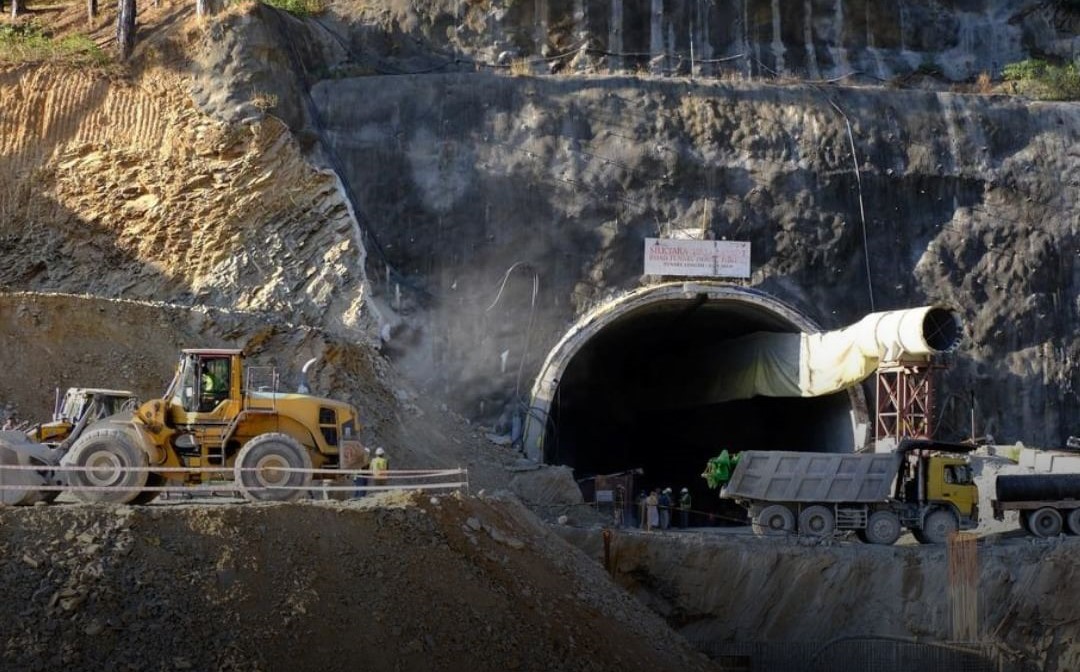“The Biggest rescue operation: International Specialists from Norway and Thailand Join Efforts to Save 40 Workers Trapped in Uttarakhand Tunnel for Six Days”


The ongoing rescue mission to save 40 construction workers trapped deep within the Silkyara-Barkot under-construction tunnel in Uttarakhand’s Uttarkashi is entering a critical phase on its sixth day. These workers have been confined since early Sunday morning, when a devastating landslide at around 5:30 am caused a section of the tunnel to collapse, sealing them inside at a depth of 260 meters.
Efforts to reach the trapped workers have escalated, with a strategic and technical approach being employed. A significant advancement in the operation involved the insertion of a six-meter section of a steel pipe into the tunnel’s bore. This methodical process includes welding additional sections to the pipe, aiming to forge a passage to the stranded workers.
The rescue plan involves a series of complex steps. The objective is to insert pipes of 800 mm and 900 mm diameters, one after the other, utilizing a giant drill. This process is expected to continue until an escape route is secured for the workers trapped beyond the collapse site.
The precarious nature of the mountain terrain where the tunnel collapse occurred has necessitated international expertise. Specialists from Norway and Thailand have been consulted. Their assessment indicated that approximately 50 meters of debris must be cleared to successfully insert the evacuation tubes, as reported by India Today.
In an extraordinary measure, if the smaller drilling machines prove inadequate, the Indian Air Force’s C-130 Hercules aircraft have already transported a large, US-manufactured auger drilling machine from Delhi. This machine, split into parts for transport, arrived at an airport 30 kilometers from the site on Wednesday. Weighing 25 tonnes, the equipment was assembled overnight, according to PTI reports.
Adding a cultural dimension to the rescue efforts, a religious ritual was conducted at the site. This followed local villagers near the incident attributing the disaster to “the wrath of the deity” of a temple that was demolished for the tunnel construction. The villagers firmly believe that pacifying the deity is essential for the success of the rescue operations.
In a positive development, it was reported on Thursday that the trapped workers have been receiving essential supplies, including food and medicine. To keep morale high, rescue teams are maintaining regular communication with the workers, ensuring their spirits remain lifted and their hopes sustained.
This rescue operation, marked by its technical complexity and the challenging terrain, has drawn significant attention and resources. It underscores the critical importance of ensuring safety in infrastructure projects and the need for prepared, multi-faceted response strategies in the face of unforeseen disasters. The collaborative efforts of local authorities, international experts, and the Indian Air Force highlight the global community’s commitment to humanitarian aid and crisis response. As the operation continues, the world watches, hoping for a successful and safe resolution for the trapped workers.


